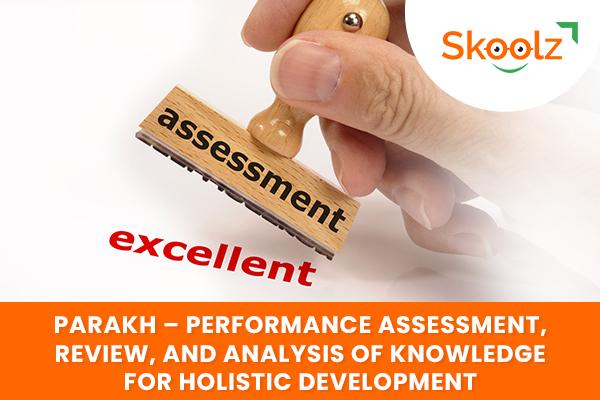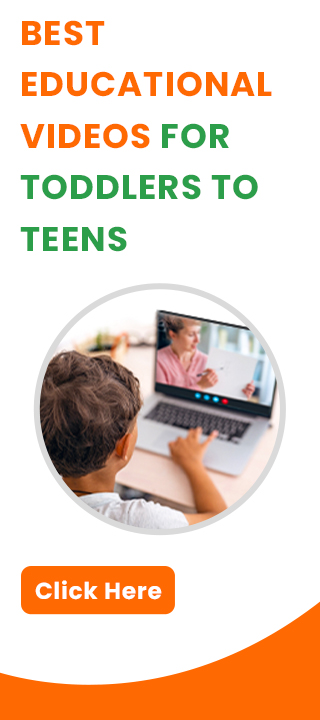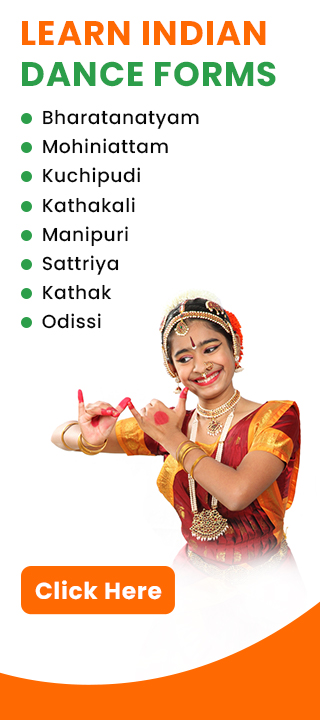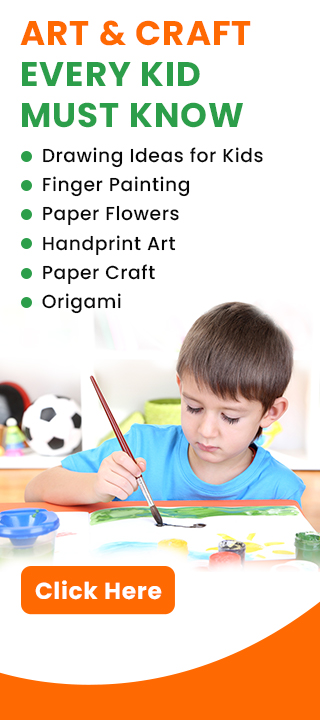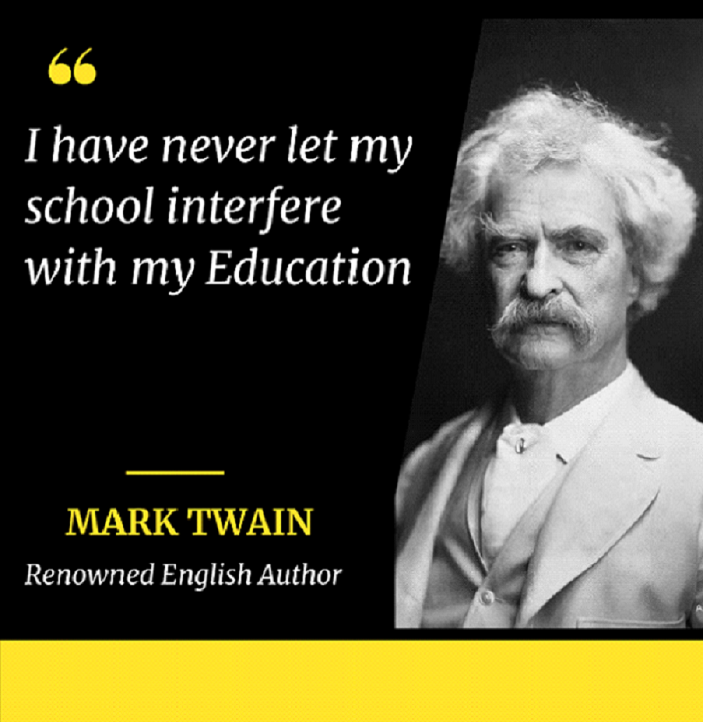
Five Policies From NEP-2020 That Could Change The Face Of School Education
My summer holidays after the seventh grade were about to finish, but I was reluctant to go back to school – I loved my school, by the way- and wanted to make an excuse.
I tried falling sick by eating some supposedly poisonous flowers from the roadside. When that failed, I jumped from our compound wall and ended up with not even a scratch.
It was pretty easy for my mother to identify my claims that skidding from a fencing wall and hurting my leg was all a drama. Finally, I couldn't lie to her anymore and shouted, "I cannot study mathematics, don't make me go back to school."
Son of one of my professional friends just finished his class-10. The father was immensely happy when the board exams were canceled due to COVID. Many occasions before that, he wondered with me, "my son wakes up at 4.30 am with no one’s intervention, does cycling around half of the city until 7 am. He is very fit and extremely good at three sports. Only if he gets through science and mathematics in this exam I will ensure he will graduate in Physical Education in best of the institutions in the country”.
In the first case, just because I was nervous about one subject, I wanted to quit my studies. In the second case, the child’s skills in fitness and sports were of no value to acquire his school leaving certificate.
I always wondered if our school assessment system was flexible enough to not impose but expose the innate talents of students.
"Students should be given increased flexibility and choice of subjects to study, including subjects in physical education, the arts and crafts, and vocational skills – so that they can design their paths of study and life plans. Holistic development and a wide choice of subjects shall become the new distinguishing feature of education, with no hard separation between 'curricular, extracurricular curricular', 'arts, humanities sciences or 'Vocational-Academic' streams."
– Section-4.9 of NEP-2020
Let us explore how the learning methods of the students of grades 3 to 12 are going to change with the advent of the National Education Policy-2020.
I. INTERACTIVE LEARNING AT THE PREPARATORY STAGE (GRADES-3 TO 5)
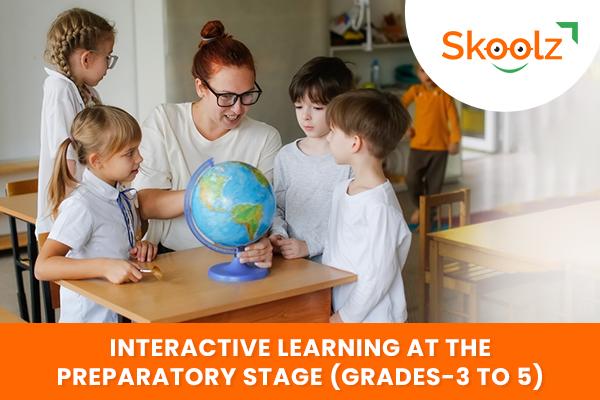
Current Scenario: The textbooks and teaching methods are teacher-centered and mostly involve rote learning. It is sad to see even in this 21st-century, we often notice the spellings and tables are being taught merely by memorization methods in schools.
Reformations from NEP: NCFSE (National Curricular Framework for School education) will prepare a curriculum that helps in building on the play, discovery and activity-based curricular style of the foundational stage. Light textbooks and Teaching-Learning material will be prescribed for interactive classroom learning.
Advantages:
Solid groundwork will be laid across subjects, including reading, writing, speaking, physical education, art, languages, science, and mathematics.
The teacher shall become a facilitator and instill self-reliance in students reducing their dependence on him/her.
A lively classroom atmosphere can be generated far from monotony.
Solid groundwork will be laid across subjects, including reading, writing, speaking, physical education, art, languages, science, and mathematics.
The teacher shall become a facilitator and instill self-reliance in students reducing their dependence on him/her.
A lively classroom atmosphere can be generated far from monotony.
II. PROMOTION OF MULTIDISCIPLINARY EDUCATION AT SECONDARY STAGE (Class-9 to 12)
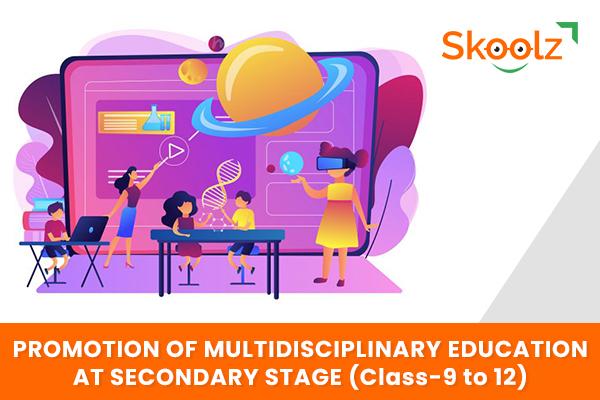
Current Scenario: Until grade-10 on most of the boards, students have little freedom or flexibility in choosing their subjects of study. Even if available on the board, schools rarely promote to avoid administrative difficulties. This is resulting in the kinds of problems I have mentioned in the introduction.
Students are forced to study against their interests and capacities
A huge gap is generated between their qualification and vocation.
Learning lacks a futuristic approach.
Education has become a mere certification agency rather than a career-building tool.
Reformations from NEP:
Flexibility and choice of subjects to study with an amalgamation of core subjects with physical education, arts, crafts, and vocational skills.
The barrier between Sciences, commerce, and arts shall be broken, and students can choose subjects from more than one stream.
Concerted curricular and pedagogical initiatives, including the introduction of contemporary subjects such as Artificial Intelligence, Design Thinking, Holistic health, Organic living, Environmental Education, Global Citizen Education, etc., will be undertaken at relevant stages.
Flexibility and choice of subjects to study with an amalgamation of core subjects with physical education, arts, crafts, and vocational skills.
The barrier between Sciences, commerce, and arts shall be broken, and students can choose subjects from more than one stream.
Concerted curricular and pedagogical initiatives, including the introduction of contemporary subjects such as Artificial Intelligence, Design Thinking, Holistic health, Organic living, Environmental Education, Global Citizen Education, etc., will be undertaken at relevant stages.
Advantages:
Increase in the spontaneity in students toward curricular activities
Transformation of education from a mere knowledge-gaining one to a skill-developing one
Increase in the employability of courses
Increase in the spontaneity in students toward curricular activities
Transformation of education from a mere knowledge-gaining one to a skill-developing one
Increase in the employability of courses
III. PROMOTION OF EXPERIENTIAL LEARNING
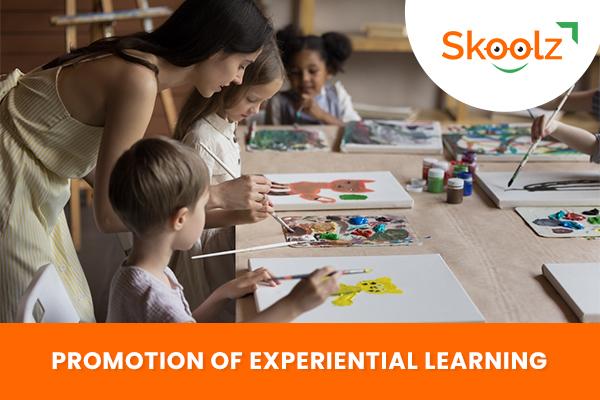
Current Scenario: Many schools follow only chalk-and-talk teaching with no hands-on learning methods whatsoever. This has been making teaching and learning so ritualistic that students rarely develop any zeal toward learning new things. Reluctance to go to school, fear of examinations, and poor reciprocation are all results of such formal education.
Reformations from NEP: In all stages, experiential learning will be adopted, including hands-on learning, arts-integrated and sports-integrated education, story-telling-based pedagogy, as standard pedagogy within each subject, and with explorations of relations among different subjects.
Advantages:
Classrooms will be made joyful
Art integration strengthens the linkage between education and culture
Sports integration helps in developing skills such as collaboration, self-initiative, self-direction, self-discipline, teamwork, responsibility, citizenship, etc.
These approaches help enhance curiosity in students, reduce absenteeism, and increase participation.
Classrooms will be made joyful
Art integration strengthens the linkage between education and culture
Sports integration helps in developing skills such as collaboration, self-initiative, self-direction, self-discipline, teamwork, responsibility, citizenship, etc.
These approaches help enhance curiosity in students, reduce absenteeism, and increase participation.
IV. MULTILINGUALISM WITH IMPORTANCE TO MOTHER TONGUE
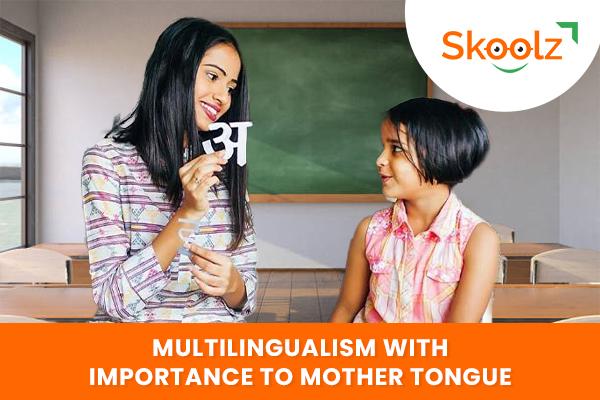
Current Scenario: While there is a rock-solid scientific consensus that teaching children in their language is the best pedagogical method, Indian parents are madly behind English as the medium of instruction from their very pre-school stage.
As a part of its 'Global Education Monitoring Report-2016', UNESCO said, "to be taught in a language other than one own has a negative effect on learning."
90% of the Nobel Laureates come from countries that teach in their mother tongue during the foundation stages.
According to the Global Innovation Index, 40 out of the 50 most innovative countries and 28 out of the 30 richest countries have their mother tongue as their medium of instruction.
Reformations from NEP:
Where ever possible, until at least Grade-5, but preferably till Grade-8, the medium of instruction will be the home language or regional language
Bilingual (home language & English) textbooks will be prepared for science and mathematics for all the classes.
In addition to high-quality offerings in Indian languages and English, foreign languages such as Korean, Japanese, Thai, French, German, Spanish, Russian, Portuguese, etc., will also be offered at the secondary level.
Where ever possible, until at least Grade-5, but preferably till Grade-8, the medium of instruction will be the home language or regional language
Bilingual (home language & English) textbooks will be prepared for science and mathematics for all the classes.
In addition to high-quality offerings in Indian languages and English, foreign languages such as Korean, Japanese, Thai, French, German, Spanish, Russian, Portuguese, etc., will also be offered at the secondary level.
Advantages:
Children learn to be expressive and communicative from a young age.
Efficient local teachers will get better teaching opportunities when allowed to teach in local languages.
Greater cognitive flexibility and problem-solving skills
Improvement in learning abilities
More rational decision-making skills
More perceptive understanding of the world
Above all, Multilingualism fetches a plethora of career benefits.
Children learn to be expressive and communicative from a young age.
Efficient local teachers will get better teaching opportunities when allowed to teach in local languages.
Greater cognitive flexibility and problem-solving skills
Improvement in learning abilities
More rational decision-making skills
More perceptive understanding of the world
Above all, Multilingualism fetches a plethora of career benefits.
V. PARAKH – PERFORMANCE ASSESSMENT, REVIEW, AND ANALYSIS OF KNOWLEDGE FOR HOLISTIC DEVELOPMENT
Current Scenario:
Most of the exams conducted by boards test the rote learning of students
Co-curricular and extracurricular skills of students do not have any say in measuring their abilities
Cut-throat patterns of assessment where students are forced with a set of subjects and failing even one makes them ineligible to go further
Determination of students’ intelligence based only on academic expertise
Most of the exams conducted by boards test the rote learning of students
Co-curricular and extracurricular skills of students do not have any say in measuring their abilities
Cut-throat patterns of assessment where students are forced with a set of subjects and failing even one makes them ineligible to go further
Determination of students’ intelligence based only on academic expertise
Reformations from NEP:
PARAKH will be a National Assessment Centre that works as a standard-setting body under MHRD to fulfill the basic objectives of setting norms, standards, and guidelines for student assessment and evaluation for all recognized school boards in India.
School boards shall shift the pattern of assessment towards meeting the skill requirements of the 21st century in consonance with the objectives of NEP-2020.
While board exams are continued for Grades 10 and 12, they will be modified highly with no place for rote learning-based questions and shall encourage competency-based learning.
Board exams shall be conducted twice a year to help students improve their performance.
All university admissions will be made through Common Entrance Exams conducted by NTA in all streams at least twice a year.
PARAKH will be a National Assessment Centre that works as a standard-setting body under MHRD to fulfill the basic objectives of setting norms, standards, and guidelines for student assessment and evaluation for all recognized school boards in India.
School boards shall shift the pattern of assessment towards meeting the skill requirements of the 21st century in consonance with the objectives of NEP-2020.
While board exams are continued for Grades 10 and 12, they will be modified highly with no place for rote learning-based questions and shall encourage competency-based learning.
Board exams shall be conducted twice a year to help students improve their performance.
All university admissions will be made through Common Entrance Exams conducted by NTA in all streams at least twice a year.
Advantages:
Reduction of mental stress in students resulting in the decrease in student suicide rate (Which is currently 28/day according to NCRB)
Avoidance of coaching centers and tuitions that relieves students from physical and mental strain and parents from the financial strain
Time and scope for institutions to teach life skills and make the students future-ready
Reduction of mental stress in students resulting in the decrease in student suicide rate (Which is currently 28/day according to NCRB)
Avoidance of coaching centers and tuitions that relieves students from physical and mental strain and parents from the financial strain
Time and scope for institutions to teach life skills and make the students future-ready
India is the youngest nation in the world now. If all the objectives of NEP-2020 are met as targeted by 2035, not only the face of education in this country, the face of the country in the world nations shall be brighter than ever. Schools, students, and parents must take an oath to implement the policy aspects to their best.

Posted by:
Kiran Sidde
Founder Director:
EduShrine Academic Services Pvt.Ltd
RITE (Regional Institute for Teenage Empowerment)

Posted by:
Swatika
Digital Account Manager

Five Policies From NEP-2020 That Could Change The Face Of School Education
My summer holidays after the seventh grade were about to finish, but I was reluctant to go back to school – I loved my school, by the way- and wanted to make an excuse.
I tried falling sick by eating some supposedly poisonous flowers from the roadside. When that failed, I jumped from our compound wall and ended up with not even a scratch.
It was pretty easy for my mother to identify my claims that skidding from a fencing wall and hurting my leg was all a drama. Finally, I couldn't lie to her anymore and shouted, "I cannot study mathematics, don't make me go back to school."
Son of one of my professional friends just finished his class-10. The father was immensely happy when the board exams were canceled due to COVID. Many occasions before that, he wondered with me, "my son wakes up at 4.30 am with no one’s intervention, does cycling around half of the city until 7 am. He is very fit and extremely good at three sports. Only if he gets through science and mathematics in this exam I will ensure he will graduate in Physical Education in best of the institutions in the country”.
In the first case, just because I was nervous about one subject, I wanted to quit my studies. In the second case, the child’s skills in fitness and sports were of no value to acquire his school leaving certificate.
I always wondered if our school assessment system was flexible enough to not impose but expose the innate talents of students.
"Students should be given increased flexibility and choice of subjects to study, including subjects in physical education, the arts and crafts, and vocational skills – so that they can design their paths of study and life plans. Holistic development and a wide choice of subjects shall become the new distinguishing feature of education, with no hard separation between 'curricular, extracurricular curricular', 'arts, humanities sciences or 'Vocational-Academic' streams."
– Section-4.9 of NEP-2020
Let us explore how the learning methods of the students of grades 3 to 12 are going to change with the advent of the National Education Policy-2020.
I. INTERACTIVE LEARNING AT THE PREPARATORY STAGE (GRADES-3 TO 5)

Current Scenario: The textbooks and teaching methods are teacher-centered and mostly involve rote learning. It is sad to see even in this 21st-century, we often notice the spellings and tables are being taught merely by memorization methods in schools.
Reformations from NEP: NCFSE (National Curricular Framework for School education) will prepare a curriculum that helps in building on the play, discovery and activity-based curricular style of the foundational stage. Light textbooks and Teaching-Learning material will be prescribed for interactive classroom learning.
Advantages:
Solid groundwork will be laid across subjects, including reading, writing, speaking, physical education, art, languages, science, and mathematics.
The teacher shall become a facilitator and instill self-reliance in students reducing their dependence on him/her.
A lively classroom atmosphere can be generated far from monotony.
Solid groundwork will be laid across subjects, including reading, writing, speaking, physical education, art, languages, science, and mathematics.
The teacher shall become a facilitator and instill self-reliance in students reducing their dependence on him/her.
A lively classroom atmosphere can be generated far from monotony.
II. PROMOTION OF MULTIDISCIPLINARY EDUCATION AT SECONDARY STAGE (Class-9 to 12)

Current Scenario: Until grade-10 on most of the boards, students have little freedom or flexibility in choosing their subjects of study. Even if available on the board, schools rarely promote to avoid administrative difficulties. This is resulting in the kinds of problems I have mentioned in the introduction.
Students are forced to study against their interests and capacities
A huge gap is generated between their qualification and vocation.
Learning lacks a futuristic approach.
Education has become a mere certification agency rather than a career-building tool.
Reformations from NEP:
Flexibility and choice of subjects to study with an amalgamation of core subjects with physical education, arts, crafts, and vocational skills.
The barrier between Sciences, commerce, and arts shall be broken, and students can choose subjects from more than one stream.
Concerted curricular and pedagogical initiatives, including the introduction of contemporary subjects such as Artificial Intelligence, Design Thinking, Holistic health, Organic living, Environmental Education, Global Citizen Education, etc., will be undertaken at relevant stages.
Flexibility and choice of subjects to study with an amalgamation of core subjects with physical education, arts, crafts, and vocational skills.
The barrier between Sciences, commerce, and arts shall be broken, and students can choose subjects from more than one stream.
Concerted curricular and pedagogical initiatives, including the introduction of contemporary subjects such as Artificial Intelligence, Design Thinking, Holistic health, Organic living, Environmental Education, Global Citizen Education, etc., will be undertaken at relevant stages.
Advantages:
Increase in the spontaneity in students toward curricular activities
Transformation of education from a mere knowledge-gaining one to a skill-developing one
Increase in the employability of courses
Increase in the spontaneity in students toward curricular activities
Transformation of education from a mere knowledge-gaining one to a skill-developing one
Increase in the employability of courses
III. PROMOTION OF EXPERIENTIAL LEARNING

Current Scenario: Many schools follow only chalk-and-talk teaching with no hands-on learning methods whatsoever. This has been making teaching and learning so ritualistic that students rarely develop any zeal toward learning new things. Reluctance to go to school, fear of examinations, and poor reciprocation are all results of such formal education.
Reformations from NEP: In all stages, experiential learning will be adopted, including hands-on learning, arts-integrated and sports-integrated education, story-telling-based pedagogy, as standard pedagogy within each subject, and with explorations of relations among different subjects.
Advantages:
Classrooms will be made joyful
Art integration strengthens the linkage between education and culture
Sports integration helps in developing skills such as collaboration, self-initiative, self-direction, self-discipline, teamwork, responsibility, citizenship, etc.
These approaches help enhance curiosity in students, reduce absenteeism, and increase participation.
Classrooms will be made joyful
Art integration strengthens the linkage between education and culture
Sports integration helps in developing skills such as collaboration, self-initiative, self-direction, self-discipline, teamwork, responsibility, citizenship, etc.
These approaches help enhance curiosity in students, reduce absenteeism, and increase participation.
IV. MULTILINGUALISM WITH IMPORTANCE TO MOTHER TONGUE

Current Scenario: While there is a rock-solid scientific consensus that teaching children in their language is the best pedagogical method, Indian parents are madly behind English as the medium of instruction from their very pre-school stage.
As a part of its 'Global Education Monitoring Report-2016', UNESCO said, "to be taught in a language other than one own has a negative effect on learning."
90% of the Nobel Laureates come from countries that teach in their mother tongue during the foundation stages.
According to the Global Innovation Index, 40 out of the 50 most innovative countries and 28 out of the 30 richest countries have their mother tongue as their medium of instruction.
Reformations from NEP:
Where ever possible, until at least Grade-5, but preferably till Grade-8, the medium of instruction will be the home language or regional language
Bilingual (home language & English) textbooks will be prepared for science and mathematics for all the classes.
In addition to high-quality offerings in Indian languages and English, foreign languages such as Korean, Japanese, Thai, French, German, Spanish, Russian, Portuguese, etc., will also be offered at the secondary level.
Where ever possible, until at least Grade-5, but preferably till Grade-8, the medium of instruction will be the home language or regional language
Bilingual (home language & English) textbooks will be prepared for science and mathematics for all the classes.
In addition to high-quality offerings in Indian languages and English, foreign languages such as Korean, Japanese, Thai, French, German, Spanish, Russian, Portuguese, etc., will also be offered at the secondary level.
Advantages:
Children learn to be expressive and communicative from a young age.
Efficient local teachers will get better teaching opportunities when allowed to teach in local languages.
Greater cognitive flexibility and problem-solving skills
Improvement in learning abilities
More rational decision-making skills
More perceptive understanding of the world
Above all, Multilingualism fetches a plethora of career benefits.
Children learn to be expressive and communicative from a young age.
Efficient local teachers will get better teaching opportunities when allowed to teach in local languages.
Greater cognitive flexibility and problem-solving skills
Improvement in learning abilities
More rational decision-making skills
More perceptive understanding of the world
Above all, Multilingualism fetches a plethora of career benefits.
V. PARAKH – PERFORMANCE ASSESSMENT, REVIEW, AND ANALYSIS OF KNOWLEDGE FOR HOLISTIC DEVELOPMENT
Current Scenario:
Most of the exams conducted by boards test the rote learning of students
Co-curricular and extracurricular skills of students do not have any say in measuring their abilities
Cut-throat patterns of assessment where students are forced with a set of subjects and failing even one makes them ineligible to go further
Determination of students’ intelligence based only on academic expertise
Most of the exams conducted by boards test the rote learning of students
Co-curricular and extracurricular skills of students do not have any say in measuring their abilities
Cut-throat patterns of assessment where students are forced with a set of subjects and failing even one makes them ineligible to go further
Determination of students’ intelligence based only on academic expertise
Reformations from NEP:
PARAKH will be a National Assessment Centre that works as a standard-setting body under MHRD to fulfill the basic objectives of setting norms, standards, and guidelines for student assessment and evaluation for all recognized school boards in India.
School boards shall shift the pattern of assessment towards meeting the skill requirements of the 21st century in consonance with the objectives of NEP-2020.
While board exams are continued for Grades 10 and 12, they will be modified highly with no place for rote learning-based questions and shall encourage competency-based learning.
Board exams shall be conducted twice a year to help students improve their performance.
All university admissions will be made through Common Entrance Exams conducted by NTA in all streams at least twice a year.
PARAKH will be a National Assessment Centre that works as a standard-setting body under MHRD to fulfill the basic objectives of setting norms, standards, and guidelines for student assessment and evaluation for all recognized school boards in India.
School boards shall shift the pattern of assessment towards meeting the skill requirements of the 21st century in consonance with the objectives of NEP-2020.
While board exams are continued for Grades 10 and 12, they will be modified highly with no place for rote learning-based questions and shall encourage competency-based learning.
Board exams shall be conducted twice a year to help students improve their performance.
All university admissions will be made through Common Entrance Exams conducted by NTA in all streams at least twice a year.
Advantages:
Reduction of mental stress in students resulting in the decrease in student suicide rate (Which is currently 28/day according to NCRB)
Avoidance of coaching centers and tuitions that relieves students from physical and mental strain and parents from the financial strain
Time and scope for institutions to teach life skills and make the students future-ready
Reduction of mental stress in students resulting in the decrease in student suicide rate (Which is currently 28/day according to NCRB)
Avoidance of coaching centers and tuitions that relieves students from physical and mental strain and parents from the financial strain
Time and scope for institutions to teach life skills and make the students future-ready
India is the youngest nation in the world now. If all the objectives of NEP-2020 are met as targeted by 2035, not only the face of education in this country, the face of the country in the world nations shall be brighter than ever. Schools, students, and parents must take an oath to implement the policy aspects to their best.

Posted by:
Kiran Sidde
Founder Director:
EduShrine Academic Services Pvt.Ltd
RITE (Regional Institute for Teenage Empowerment)

Posted by:
Swatika
Digital Account Manager

 +91 9742974283
+91 9742974283